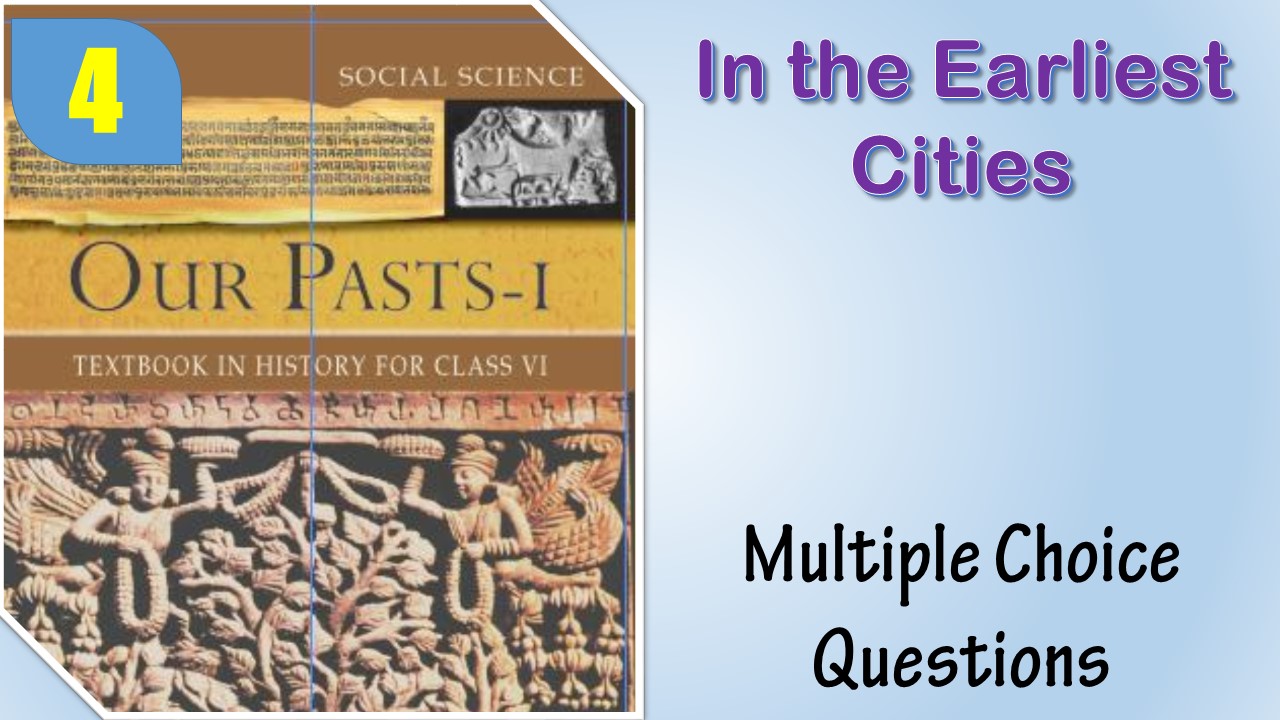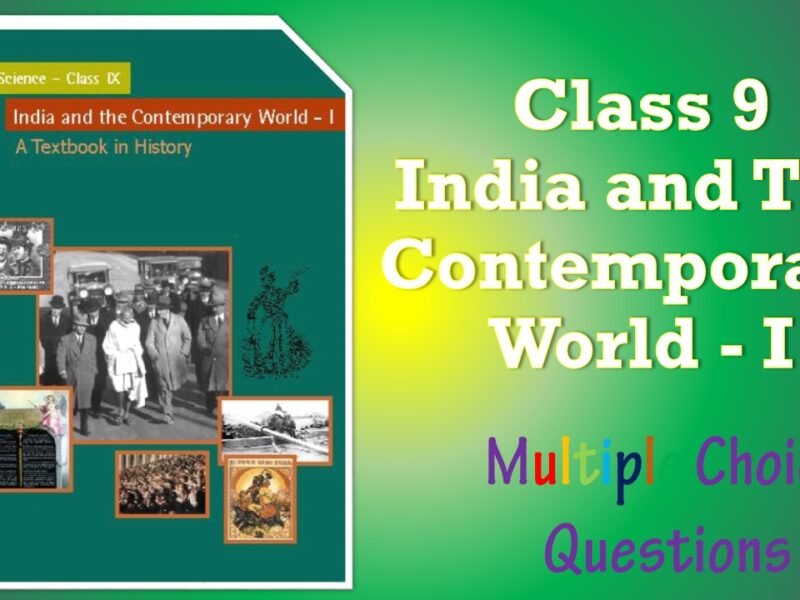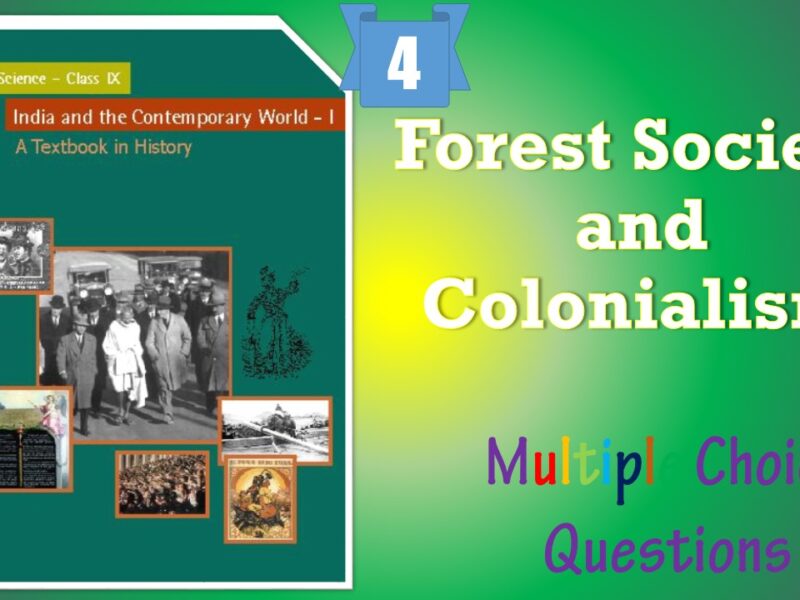Class 6 Social Science History MCQ In the Earliest Cities with Answers is Prepared Based on Latest Exam Pattern. Students can solve NCERT Class 6 Social Science History MCQ In the Earliest Cities with Answers to know their preparation level.
Students who are searching for NCERT Class 6 Social Science History MCQ In the Earliest Cities with Answers are compiled here to get good practice on all fundamentals. Know your preparation level on MCQ Questions for Class 6 Social Science History MCQ In the Earliest Cities with Answers. You can also verify your answers from the provided Class 6 Social Science History MCQ In the Earliest Cities with Answers. So, ace up your preparation with MCQ of Class 6 Social Science History & NCERT Textbook solutions Examinations.
CBSE Class 6 Social Science History MCQ In the Earliest Cities with Answers
Question : When was the cities of Mohan-jo-daro discovered
(a) 1924
(b) 1922
(c) 1920
(d) 1918
Answer :(b) 1922Show Answer :
Question : How many storeys of houses were generally found in Harappan cities?
(a) One or two storeys
(b) Four to five storeys
(c) Multi storeys
(d) None of these
Answer :(a) One or two storeysShow Answer :
Question : Tin was mixed with copper to produce
(a) Lid
(b) Gold
(c) Bronze
(d) Silver
Answer :(c) BronzeShow Answer :
Question : Cities which had elaborates store houses
(a) Harappa, Kalibangan and Lothal
(b) Mohenjo-Daro, Harappa and Lothal
(c) Surkotada, Harappa and Lothal
(d) Mohenjo-Daro, Harappa and Kalibangan
Answer :(b) Mohenjo-Daro, Harappa and LothalShow Answer :
Question : How did the Harappans irrigate their fields and grow plants? Through
(a) rainfall
(b) stored water
(c) streams
(d) rivers
Answer :(b) stored waterShow Answer :
Question : Harappans also made pots with beautiful
(a) Green designs
(a) Black designs
(c) Blue designs
(d) Yellow designs
Answer : (b) Black designsShow Answer :
Question : The Harappans probably got copper from present-day_____ , and even from ______ in West Asia
(a) Rajasthan and Oman
(a) Gujarat and Oman
(c) Rajasthan and Egypt
(d) Gujarat and Egypt
Answer : (a) Rajasthan and OmanShow Answer :
Question : Cities, such as Kalibangan and Lothal had found
(a) Special tools
(b) Fire altars
(c) Store houses
(d) Great bath
Answer : BShow Answer :
Question : By what name is the Indus Valley Civilisation now called
(a) Harappan civilization
(b) Mohan daro Civilisation
(c) Valley Culture
(d) Indus Culture
Answer : AShow Answer :
Question : Spindly whorls were used for:
(a) To spin thread
(b) Making the vessels
(c) Polishing the beads
(d) All of these
Answer :(a) To spin threadShow Answer :
Question : _________ is a dry desert, except for the lands along the river Nile
(a) Arab
(b) Egypt
(c) Iraq
(d) Iran
Answer : BShow Answer :
Question : Sites in Sindh and west Punjab are in present-day
(a) India
(b) China
(c) Pakistan
(d) Nepal
Answer : CShow Answer :
Question : The Harappans also made seals out of stone. These are generally
(a) Square
(b) Triangular
(c) Circular
(d) Rectangular
Answer : DShow Answer :
Question : Colour of faience was:
(a) Red
(b) Blue or sea green
(c) Yellow
(d) Black
Answer : BShow Answer :
Question : In the Grid system the intersection of road at which angle
(a) Straight
(b) Obtuse
(c) Acute
(d) Right
Answer : DShow Answer :
Question : Cities which had elaborates store houses
(a) Harappa, Kalibangan and Lothal
(b) Mohenjo-Daro, Harappa and Lothal
(c) Surkotada, Harappa and Lothal
(d) Mohenjo-Daro, Harappa and Kalibangan
Answer : BShow Answer :
Question : Where are the fire altars found?
(a) Kalibanga
(b) Lothal
(c) both a and b
(d) None of the above
Answer : CShow Answer :
Question : Which of the following is not the earliest cities in the sub-continents
(a) Sotkakoh
(b) Dholavira
(c) Mehrgarh
(d) Lothal
Answer : CShow Answer :
Question : From where did the Harappans import gold?
(a) Iran
(b) Afghanistan
(c) Rajasthan
(d) Karnataka.
Answer : DShow Answer :
Question : What was the thing used to shape sand or powdered quartz into an object?
(a) Gum
(b) Ink
(c) Nails
(d) Rubber
Answer : AShow Answer :
Question : How did the Harappans irrigate their fields and grow plants? Through
(a) rainfall
(b) stored water
(c) streams
(d) rivers
Answer : BShow Answer :
Question : The part of the east was larger but lower. This part was called
(a) Upper town
(b) East town
(c) West town
(d) Lower town
Answer : DShow Answer :
Question : Which are substances that are either found naturally (such as wood, or ores of metals) or produced by farmers or herders? These are then processed to produce finished goods
(a) Substances material
(b) Raw materials
(c) Producers material
(d) Natural material
Answer : BShow Answer :
Question : Seal found in Harappa was:
(a) Rectangular
(b) Round
(c) Triangular
(d) Square shape
Answer : AShow Answer :
Question : What is a person who takes special training to make a particular thing called?
(a) Archaeologist
(b) specialist
(c) Historian
(d) apprentice.
Answer : BShow Answer :
Question : A _______ is a person who is trained to do only one kind of work
(a) Specialist
(b) Practitioners
(c) Medicines
(d) Trainer
Answer : AShow Answer :
Question : The part of the west was smaller but higher are describe as
(a) Uppardel
(b) Citadel
(c) Lowerdel
(d) Lower town
Answer : BShow Answer :
Question : Many of beads were made of:
(a) Carnelian, a beautiful blue stone
(b) Carnelian, a beautiful red stone
(c) Chert
(d) None of these
Answer : BShow Answer :
Question : The cities were divided into:
(a) One or more parts
(b) Two or more parts
(c) Three or more parts
(d) Four or more parts
Answer : BShow Answer :
Question : When did the end of the Harappan cities begin?
(a) 2900 years ago
(b) 3900 years ago
(c) 4900 years ago
(d) 2100 years ago
Answer : BShow Answer :
Question : How many storeys of houses were generally found in Harappan cities?
(a) One or two storeys
(b) Four to five storeys
(c) Multi storeys
(d) None of these
Answer : AShow Answer :
Question : When was the cities of Mohan-jo-daro discovered
(a) 1924
(b) 1922
(c) 1920
(d) 1918
Answer : BShow Answer :
Question : The Harappans probably got copper from present-day_______, and even from _______ in West Asia
(a) Rajasthan and Oman
(b) Gujarat and Oman
(c) Rajasthan and Egypt
(d) Gujarat and Egypt
Answer : AShow Answer :
Question : Harappa culture came to an end about
(a) 1500 B.C
(b) 1000 B.C
(c) 1600 B.C
(d) 1800 B.C
Answer : DShow Answer :
Question : Great Bath have been found on which site
(a) Ganweriwala
(b) Harappa
(c) Rakhi Garhi
(d) Mohenjodaro
Answer : DShow Answer :
Question : Harappa culture came to an end about
(a) 1500 B.C
(b) 1000 B.C
(c) 1600 B.C
(d) 1800 B.C
Answer :(d) 1800 B.CShow Answer :
Question : Terracotta toys were containing:
(a) Picture of animals
(b) Picture of fire
(c) Picture of King
(d) Picture of well
Answer :(a) Picture of animalsShow Answer :
Question : What was used to dig the earth for turning the soil and planting seeds
(a) Digger
(b) Axe
(c) Plough
(d) Plaster
Answer : CShow Answer :
Question : Seal found in Harappa was:
(a) Rectangular
(b) Round
(c) Triangular
(d) Square shape
Answer :(a) RectangularShow Answer :
Question : Mohan-jo-daro is situated in
(a) Bangladesh
(b) Nepal
(c) Pakistan
(d) India
Answer :(c) PakistanShow Answer :
Question : Which metal were the most of things found by the archaeologists made of?
(a) Stone
(b) Copper and gold
(c) Silver
(d) All of these
Answer :(d) All of theseShow Answer :
Question : Harappans also made pots with beautiful
(a) Green designs
(b) Black designs
(c) Blue designs
(d) Yellow designs
Answer : BShow Answer :
Question : Tin was mixed with copper to produce
(a) Lid
(b) Gold
(c) Bronze
(d) Silver
Answer : CShow Answer :
Question : A place where surplus grain were stored
(a) Storage
(b) Warehouse
(c) Basket
(d) Granaries
Answer : DShow Answer :
Question : When was the cities of Mohan-jo-daro discovered
(a) 1924
(b) 1922
(c) 1920
(d) 1918
Answer :(b) 1922Show Answer :
Question : In the Grid system the intersection of road at which angle
(a) Straight
(b) Obtuse
(c) Acute
(d) Right
Answer :(d) RightShow Answer :
Question : Who supplied food to craft persons, scribes and rulers in the cities?
(a) Local citizens
(b) Farmers and herders
(c) Post men
(d) All of these
Answer :(b) Farmers and herdersShow Answer :
Question : Which colours were used for glazed material resulting in a shiny object?
(a) Black and white
(b) Red and yellow
(c) Blue or sea green
(d) Pink or brown
Answer :(c) Blue or sea greenShow Answer :
Question : By what name is the Indus Valley Civilisation now called
(a) Harappan civilization
(b) Mohan daro Civilisation
(c) Valley Culture
(d) Indus Culture
Answer :(a) Harappan civilizationShow Answer :
Question : Many of beads were made of:
(a) Carnelian, a beautiful blue stone
(b) Carnelian, a beautiful red stone
(c) Chert
(d) None of these
Answer :(b) Carnelian, a beautiful red stoneShow Answer :
Question : Sites in Sindh and west Punjab are in present-day
(a) India
(b) China
(c) Pakistan
(d) Nepal
Answer :(c) PakistanShow Answer :
Question : The cities were divided into:
(a) One or more parts
(b) Two or more parts
(c) Three or more parts
(d) Four or more parts
Answer :(b) Two or more partsShow Answer :
Question : Cities, such as Kalibangan and Lothal had found
(a) Special tools
(b) Fire altars
(c) Store houses
(d) Great bath
Answer :(b) Fire altarsShow Answer :
Question : From where did the boats and ships come into the sea and rivers?
(a) Ports
(b) Dockyards
(c) None of these
(d) Both (a) and (b)
Answer :(b) DockyardsShow Answer :
Question : In the Grid system the intersection of road at which angle
(a) Straight
(b) Obtuse
(c) Acute
(d) Right
Answer :(d) RightShow Answer :
Question : Which of the following is not the earliest cities in the sub-continents
(a) Sotkakoh
(b) Dholavira
(c) Mehrgarh
(d) Lothal
Answer :(c) MehrgarhShow Answer :
Question : Harappans also made pots with beautiful
(a) Green designs
(b) Black designs
(c) Blue designs
(d) Yellow designs
Answer :(b) Black designsShow Answer :
Question : A _ is a person who is trained to do only one kind of work
(a) Specialist
(b) Practitioners
(c) Medicines
(d) Trainer
Answer :(a) SpecialistShow Answer :
Question : Colour of faience was:
(a) Red
(a) Blue or sea green
(c) Yellow
(d) Black
Answer : (b) Blue or sea greenShow Answer :
Question : Seal found in Harappa was:
(a) Rectangular
(a) Round
(c) Triangular
(d) Square shape
Answer : (a) RectangularShow Answer :
Question : Seal found in the Harappan cities is made of:
(a) Wood
(a) Stone
(c) Leather
(d) Baked clay
Answer : (b) StoneShow Answer :
Question : Terracotta toys were containing:
(a) Picture of animals
(a) Picture of fire
(c) Picture of King
(d) Picture of well
Answer : (a) Picture of animalsShow Answer :
Question : Which of the following is not the earliest cities in the sub-continents
(a) Sotkakoh
(a) Dholavira
(c) Mehrgarh
(d) Lothal
Answer : (c) MehrgarhShow Answer :
Question : Spindly whorls were used for:
(a) To spin thread
(a) Making the vessels
(c) Polishing the beads
(d) All of these
Answer : (a) To spin threadShow Answer :
Question : These were available around the settlement:
(a) Grain’s stores
(a) Experts
(c) Water and pasture
(d) None of these
Answer : (c) Water and pastureShow Answer :
Question : Many of beads were made of:
(a) Carnelian, a beautiful blue stone
(a) Carnelian, a beautiful red stone
(c) Chert
(d) None of these
Answer : (b) Carnelian, a beautiful red stoneShow Answer :
Question : Use of seal was for:
(a) Stamping bags or packets containing goods
(a) Stamping the animals
(c) Sealing houses
(d) Sealing unexpected objects
Answer : (a) Stamping bags or packets containing goodsShow Answer :
Question : The cities were divided into:
(a) One or more parts
(a) Two or more parts
(c) Three or more parts
(d) Four or more parts
Answer : (b) Two or more partsShow Answer :
Question : Cities which had elaborates store houses
(a) Harappa, Kalibangan and Lothal
(a) Mohenjo-Daro, Harappa and Lothal
(c) Surkotada, Harappa and Lothal
(d) Mohenjo-Daro, Harappa and Kalibangan
Answer : (b) Mohenjo-Daro, Harappa and LothalShow Answer :
Question : Which thing was found in the Harappan cities?
(a) Silver vase
(a) Beads and stone blade
(c) Seal and terracotta toys
(d) All of these
Answer : (d) All of theseShow Answer :
Question : Cities, such as Kalibangan and Lothal had found
(a) Special tools
(b) Fire altars
(c) Store houses
(d) Great bath
Answer :(b) Fire altarsShow Answer :
Question : Cities, such as Kalibangan and Lothal had found
(a) Special tools
(a) Fire altars
(c) Store houses
(d) Great bath
Answer : (b) Fire altarsShow Answer :
Question : Harappa culture came to an end about
(a) 1500 B.C
(a) 1000 B.C
(c) 1600 B.C
(d) 1800 B.C
Answer : (d) 1800 B.CShow Answer :
Question : The part of the west was smaller but higher are describe as
(a) Uppardel
(a) Citadel
(c) Lowerdel
(d) Lower town
Answer : (b) CitadelShow Answer :
Question : Great Bath have been found on which site
(a) Ganweriwala
(a) Harappa
(c) Rakhi Garhi
(d) Mohenjodaro
Answer : (d) MohenjodaroShow Answer :
Question : What was used to dig the earth for turning the soil and planting seeds
(a) Digger
(a) Axe
(c) Plough
(d) Plaster
Answer : (c) PloughShow Answer :
Question : A place where surplus grain were stored
(a) Storage
(a) Warehouse
(c) Basket
(d) Granaries
Answer : (d) GranariesShow Answer :
Fill in the blanks
Question : ……………………… were used to spin the thread.
Answer : Spindle whorlsShow Answer :
Question : Wood is example of ……………………… resource.
Answer : naturalShow Answer :
Question : Stone weight were shaped ……………………… and ……………………… .
Answer : carefully and preciselyShow Answer :
Question : Chert is a kind of ……………………… .
Answer : stoneShow Answer :
Question : ……………………… was a beautiful stone.
Answer : CarnelianShow Answer :
Question : Terracotta is ……………………… .
Answer : baked earthShow Answer :
Question : Cotton is a natural resource produced by ……………………… .
Answer : farmerShow Answer :
Question : Cotton was probably grown at ……………………… .
Answer : MehrgarhShow Answer :
Question : Silver vase was found at ……………………… .
Answer : MohenjodaroShow Answer :
Question : ……………………… was used to shape sand or powdered quartz into an object.
Answer : GumShow Answer :



